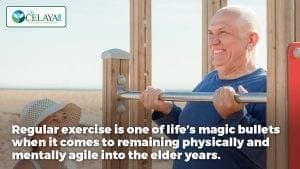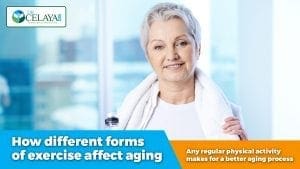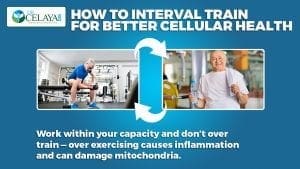Aging gracefully is all about taking care of your mitochondria — the little energy factories in each cell. As we get older, their function can start to diminish, which plays a key role in aging of the body. However, new research has shown a little-known strategy to boost the longevity and function of your mitochondria — regular bursts of high intensity exercise.
People are told to exercise for all sorts of reasons, but regular exercise is one of life’s magic bullets when it comes to remaining physically and mentally agile into the elder years. Any kind of regular exercise is better than none when it comes to health and longevity.

However, when it comes to nurturing cellular mitochondria and thus better preserving your overall health, one form of exercise outshines the rest — intervals of high intensity exercise. This means an exercise routine that boosts the heart rate to healthy upper thresholds for several minutes at a time.
How different forms of exercise affect aging

Although any regular physical activity makes for a better aging process, a recent Mayo Clinic study showed different types improve aging in different ways.
The study divided healthy but sedentary men and women under the age of 30 and over the age of 64 into several groups of exercise:
- Vigorous weight-lifting several times a week.
- Interval training three times a week on stationary bikes (they did three sets of pedaling hard for four minutes and resting for three minutes).
- Alternated between mild weight lifting and moderate pedaling on a stationary bike throughout the week.
- No exercise.
Not surprisingly, all the groups who exercised reported better blood sugar control and fitness after three months of regular exercise. The vigorous weight lifters gained muscle mass while the interval exercises gained more endurance.
But the finding that surprised researchers was cellular improvement in the interval exercisers. The under-30 interval exercisers showed changes in 274 genes, compared to 170 genes in the young moderate mixed exercise group and 74 genes in the young weight lifters.
However, the older interval exercisers showed changes in 400 genes, compared to only 19 for the older moderate exercisers and 33 for the older weight lifters.
In other words, interval exercising is the most advantageous at any stage of life, but it’s significantly more advantageous the older you are compared to other forms of exercise.
How interval exercise improves the aging process
Researchers theorize interval training is beneficial because it increases the number and health of cellular mitochondria. This means more energy for muscles (including the heart), better brain function, and better recovery and regeneration.
The fact that the older participants had more robust responses to high intensity interval training shows it is never too late to exercise, especially if you do the most beneficial kind. Another bonus? You can extract the most gains in the least amount of time from interval exercise, which requires less time than other forms.
How to interval train for better cellular health
To interval train simply push yourself to your maximum effort for several minutes several times in your routine, with short periods of rest in between sets. Work within your capacity and don’t over train — over exercising causes inflammation and can damage mitochondria.

Ask my office for more advice on the best way to exercise for optimal health.

